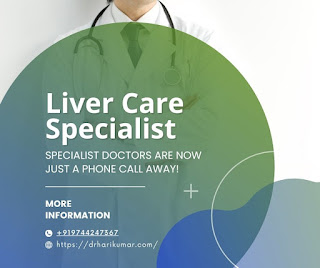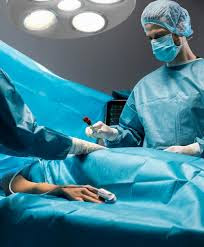How Fatty Liver Disease Develops and Ways to Reverse It Naturally
The liver is one of the most hardworking organs in the human body. It filters toxins, helps with digestion, stores nutrients, and supports metabolism. However, when fat begins to accumulate inside the liver cells, it can lead to a condition known as fatty liver disease. This condition is becoming increasingly common worldwide due to lifestyle changes, sedentary habits, and dietary factors.
There are two main types of fatty liver disease:
-
Alcoholic Fatty Liver Disease (AFLD): Caused by heavy alcohol consumption.
-
Non-Alcoholic Fatty Liver Disease (NAFLD): Occurs even in people who drink little or no alcohol and is closely linked to obesity, diabetes, and metabolic syndrome.
Understanding how fatty liver disease develops and the natural ways to reverse it can help prevent complications and improve liver health. Let’s explore this step by step.
How Fatty Liver Disease Develops
Fatty liver disease usually starts silently, without major symptoms in the early stages. The process begins when fat builds up inside liver cells, gradually affecting liver function. Several factors contribute to this condition:
1. Excess Calorie Intake
When the body consumes more calories than it burns—especially from refined sugars, processed foods, and unhealthy fats—the liver converts these excess calories into fat for storage. Over time, this fat accumulates in the liver cells.
2. Obesity and Insulin Resistance
Obesity, particularly belly fat, increases the risk of fatty liver. It is often linked to insulin resistance, where the body’s cells do not respond properly to insulin. This leads to elevated blood sugar levels and fat buildup in the liver.
3. High Alcohol Intake
For alcoholic fatty liver disease, heavy drinking damages liver cells, leading to fat accumulation, inflammation, and in severe cases, liver cirrhosis.
4. Sedentary Lifestyle
Physical inactivity slows down metabolism, promotes weight gain, and reduces the body’s ability to process fats efficiently, increasing the risk of fatty liver.
5. Genetic and Metabolic Factors
Family history, hormonal imbalances, and conditions like high cholesterol and type 2 diabetes also play a role in fatty liver development.
Stages of Fatty Liver Disease
Fatty liver progresses through stages if not addressed in time:
-
Simple Fatty Liver (Steatosis): Fat accumulates, but there’s little to no inflammation or scarring. It’s usually reversible at this stage.
-
Non-Alcoholic Steatohepatitis (NASH): Fat buildup leads to inflammation and liver cell damage.
-
Fibrosis: Continued inflammation causes scar tissue to form.
-
Cirrhosis: Severe scarring disrupts liver structure and function, potentially leading to liver failure.
Early Signs and Symptoms
Many people with fatty liver disease don’t experience noticeable symptoms early on. However, as the condition progresses, some may experience:
-
Fatigue or weakness
-
Mild pain in the upper right abdomen
-
Unexplained weight gain
-
Difficulty concentrating or brain fog
Regular health check-ups and liver function tests are essential because early detection allows for timely intervention.
Natural Ways to Reverse Fatty Liver Disease
The good news is that fatty liver disease is often reversible, especially in its early stages. Making consistent lifestyle changes can reduce fat accumulation, improve liver function, and prevent complications.
Here are the most effective natural strategies:
1. Focus on a Liver-Friendly Diet
Your diet plays a crucial role in reversing fatty liver. Consider the following tips:
-
Increase fiber intake: Fruits, vegetables, legumes, and whole grains help regulate blood sugar and reduce fat buildup.
-
Choose healthy fats: Include sources of omega-3 fatty acids like fatty fish, walnuts, and flaxseeds.
-
Reduce refined carbs and sugar: Avoid white bread, pastries, sugary drinks, and processed snacks.
-
Use healthy oils: Olive oil and avocado oil in moderation are better alternatives to hydrogenated oils.
-
Eat lean protein: Opt for fish, skinless poultry, beans, and lentils.
2. Maintain a Healthy Weight
Losing just 5–10% of body weight can significantly reduce fat in the liver. Crash diets aren’t recommended; gradual and sustainable weight loss through balanced nutrition and exercise works best.
3. Stay Physically Active
Regular exercise helps burn stored fat, improves insulin sensitivity, and boosts overall liver health. Aim for:
-
150 minutes of moderate exercise like brisk walking or cycling weekly
-
Strength training at least twice a week to build muscle and support metabolism
4. Limit or Avoid Alcohol
For anyone with fatty liver disease, limiting alcohol intake—or completely avoiding it—is essential, as even moderate consumption can worsen liver damage.
5. Manage Blood Sugar and Cholesterol Levels
High blood sugar and bad cholesterol accelerate fat accumulation in the liver. Lifestyle changes like diet, exercise, and stress reduction can help regulate these levels naturally.
6. Include Liver-Supporting Foods and Herbs
Some natural foods and herbs have liver-protective properties:
-
Green tea: Rich in antioxidants that may reduce liver fat.
-
Turmeric: Contains curcumin, known for its anti-inflammatory effects.
-
Garlic: May help reduce fat buildup in the liver.
-
Coffee: Moderate coffee consumption has been linked to a lower risk of liver inflammation.
7. Stay Hydrated
Drinking plenty of water supports digestion, nutrient absorption, and the liver’s detoxification processes.
8. Get Enough Sleep and Manage Stress
Poor sleep and chronic stress disrupt hormone balance and metabolism, indirectly affecting liver health. Practicing mindfulness, yoga, or relaxation techniques can be beneficial.
When to See a Doctor
While lifestyle changes help in most early-stage cases, medical advice is essential if:
-
Symptoms worsen or new ones appear
-
Liver function tests show abnormalities
-
You have risk factors like diabetes, obesity, or high cholesterol
A gastroenterologist or hepatologist may recommend further tests like ultrasound, MRI, or biopsy to assess liver health and guide treatment.
FAQs on Fatty Liver Disease
1. Can fatty liver disease be reversed naturally?
Yes, especially in early stages, lifestyle changes like diet, exercise, and weight management can reverse fatty liver.
2. How long does it take to reverse fatty liver?
It varies, but consistent lifestyle changes can show improvements within a few months.
3. Do I need medication for fatty liver disease?
Not always. Doctors usually recommend lifestyle changes first unless there is severe liver damage.
4. Can slim people get fatty liver disease?
Yes, even people with normal weight can develop fatty liver due to genetics, poor diet, or metabolic issues.
5. Is fatty liver always linked to alcohol?
No. Non-Alcoholic Fatty Liver Disease (NAFLD) occurs in people who drink little or no alcohol.
Final Thoughts
Fatty liver disease develops gradually, often without clear symptoms, but it can have serious long-term consequences if ignored. The good news is that it can be reversed naturally through healthy eating, regular exercise, weight management, and lifestyle changes.
The liver has a remarkable ability to heal itself when given the right support. By making conscious choices today, you can protect your liver and improve your overall health for the future.




Comments
Post a Comment